#atlantic horseshoe crab
Text
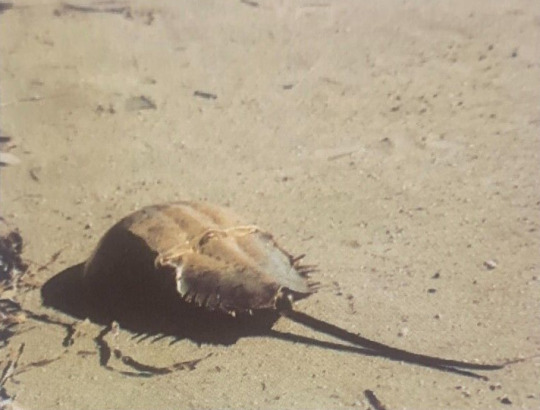
Atlantic horseshoe crab
By: Unknown photographer
From: WWF Threatened Animals
1986
168 notes
·
View notes
Text
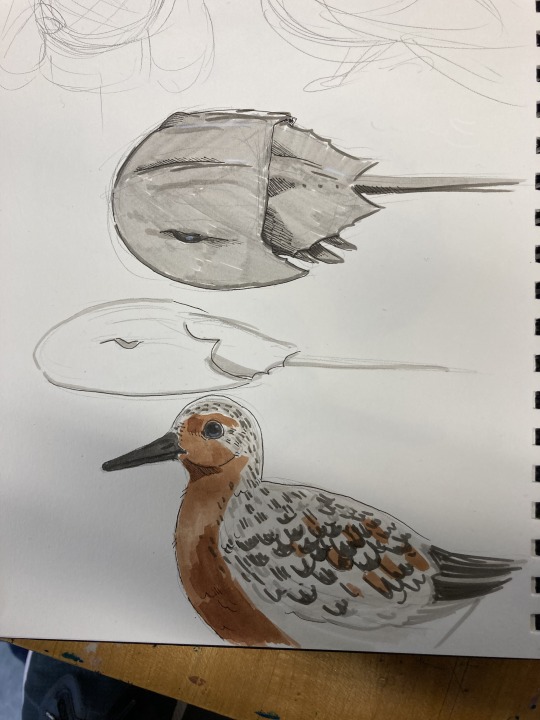
HEWO EVERYPONY
[ID: A detail of a sketchbook page showing three study drawings in marker, two of an Atlantic horseshoe crab and one of a Rufa red knot in breeding plumage
The crabs are flat, with a dome-like shell the shape of a horseshoe covering much of their head and abdomen. The thorax is slightly smaller with spikes to the sides, which then leads to the long, spine-like tail. Only one is colored, it is pale brown.
The red knot is a sandpiper-like bird; with a compact and almost mango-shaped body and a long, black beak. The dorsal feathers are a light gray peppered with a darker color, which then turn to bars at the wings. The inner face and belly of the bird are a pale, reddish brown. End description.]
#ent’s art#Birds#calidris#charadriiformes#calidris canutus#Calidris canutus rufa#shorebirds#atlantic horseshoe crab#Arthropods#limulidae#limulus polyphemus#image described
16 notes
·
View notes
Photo

Living Fossil
An Atlantic horseshoe crab (Limulus polyphemus) in the mangroves of Ria Lagartos nature reserve, Yucatán. Females can lay up to 20,000 eggs in one night playing an important role in providing nutrient-rich eggs to migratory birds.
by Fernando Constantino Martínez Belmar, Mexico
Mangrove Photography Awards
#fernando constantino martinez belmar#mexico#photographer#mangrove photography awards#living fossil#atlantic horseshoe crab#crab#marine#limulus polyphemus#ria lagartos nature reserve#yucatan#animal#nature
35 notes
·
View notes
Photo

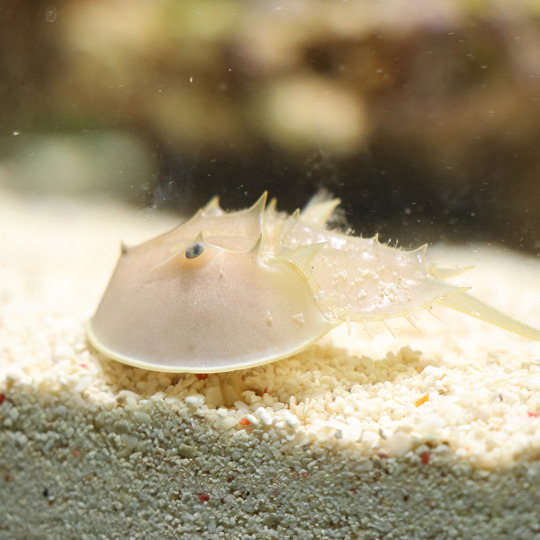
エアーの圧で転がりまくっていてかわいかった
@幼魚水族館
71 notes
·
View notes
Text

Local benthic buddies psa
#marine biology#horseshoe crab#stingray#:) fun doodle#Atlantic rays are always overlooked but they have such pretty iridescence....#i am still. adjusting to clip studio#i made the atlantic ray too unround. alas
53 notes
·
View notes
Photo

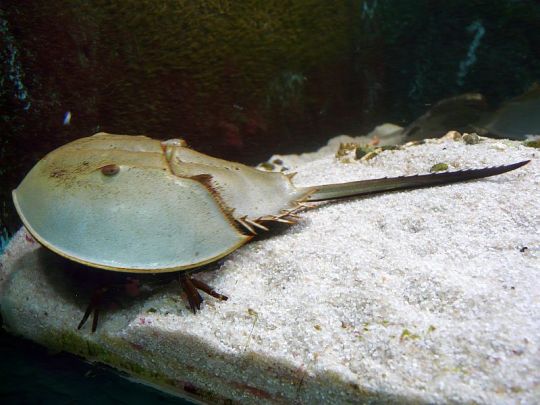

The Atlantic Horseshoe Crab also known as the American horseshoe crab, is a species of marine and brackish chelicerate arthropod native to the western Atlantic ocean from the coasts of Nova Scotia Canada in the North to the Yutan Peninsula of Mexico in the South. Atlantic horseshoe crabs range from shallow coastal habitats such as lagoons, estuaries and mangroves to depths of more than 650ft up to 35 miles offshore, they are bottom dwellers which shift through the substrate in search of mollusks, worms, other invertebrates, and carrion on which to feed. Reaching up to 2ft in length and 12lbs in weight the Atlantic Horseshoe crab is largest species of horseshoe crab, both sexes look similar, but females are typically 25 to 30% larger than males. Horseshoe crabs have 3 main parts to the body: the head region, known as the "prosoma", the abdominal region or "opisthosoma", and the spine-like tail or "telson". There horseshoe shaped carapace is greenish grey to dark brown in color. Additionally horseshoe crabs are famous and prized for their blue blood, as it is widely used in biomedical sciences for the development of drugs as the blood contains a chemical called Limulus amoebocyte lysate or LAL that can be used to easily detect germs and their endotoxins. Nesting usually follows the cycle of the high tide of the full and new moons. During the mating period, the males will follow and cling to the backs of their potential mates using modified prosomal appendages for long periods of time before the egg-laying has occurred. Once a mate is found, they come ashore and the female digs a hole and lays anywhere from 15,000 to 64,000 eggs while the male externally fertilizes them. Once the eggs are laid, the male and female go back to the ocean, and the eggs develop on their own hatching several weeks later into miniature versions of the adults. Under ideal conditions an Atlantic Horseshoe crab will reach sexual maturity at around 9 years of age and may live up to 40 years.
3 notes
·
View notes
Text
Bumming around Assateague State Park with the Hot Wife.
Helped some horseshoe crabs back to the ocean, saw a harbor seal playing in the surf, and the ponies. The shell are from the Western North Atlantic hard-shelled clam. It was used by Native Americans for storytelling and recording important events and post-European contact as currency.



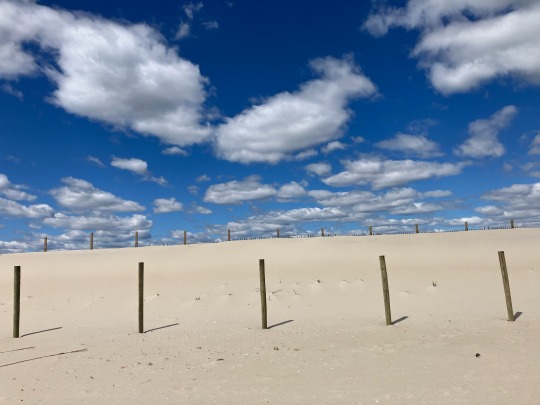
66 notes
·
View notes
Text
i wanna see more love for "common" underappreciated usamerican animals. so here's a poll for animals from my tiny lil overlooked state


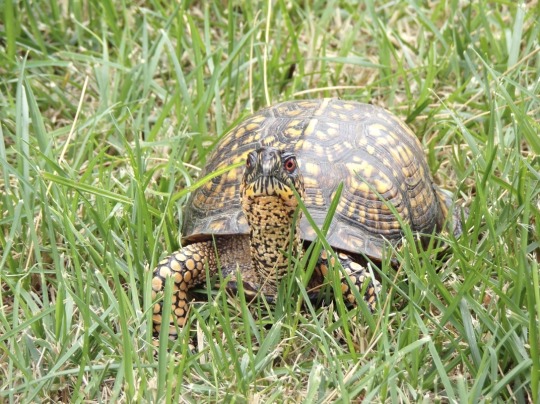
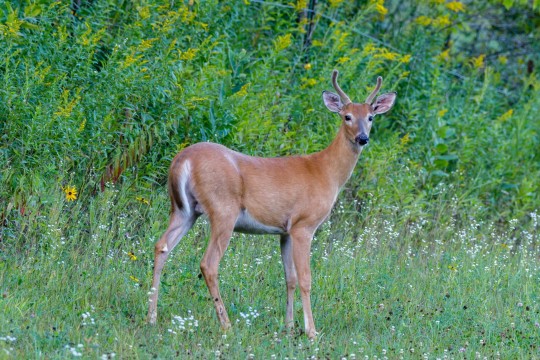
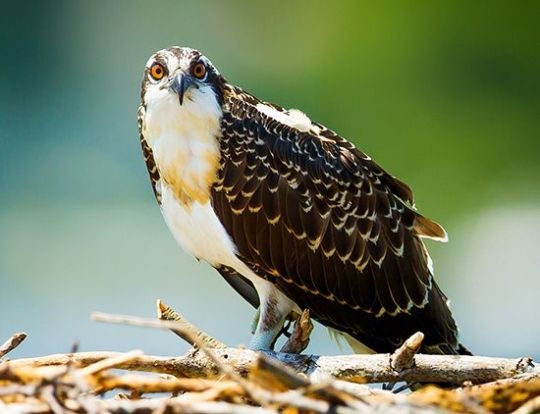
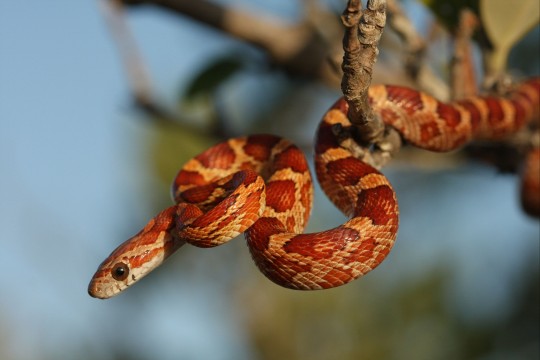
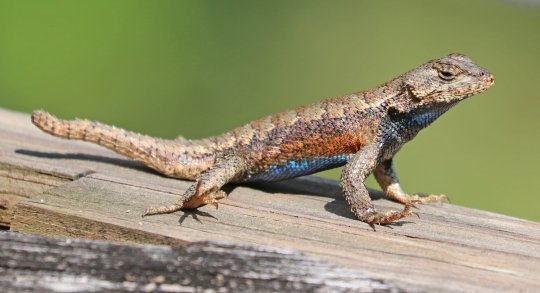
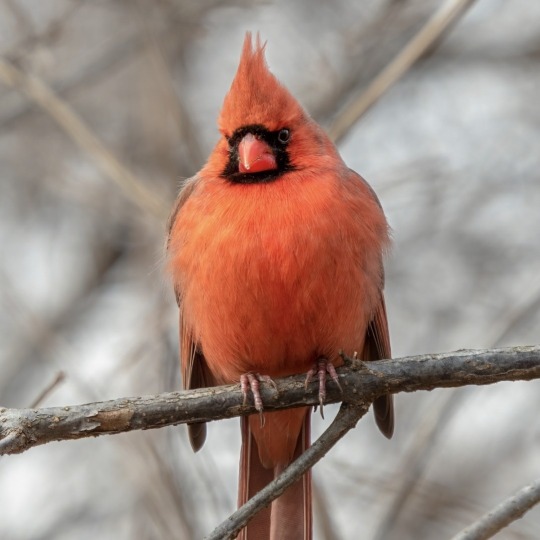

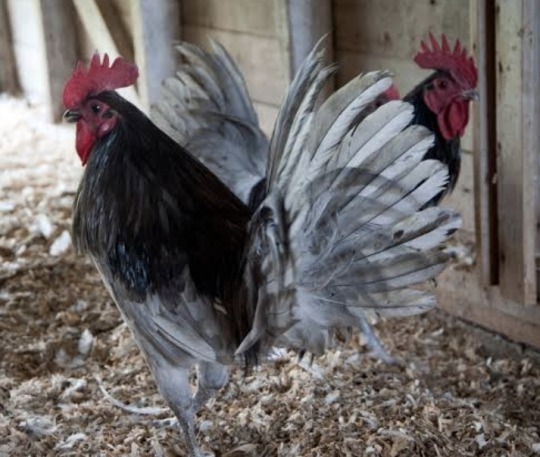
50 notes
·
View notes
Text
Primarch mermay ideas
[ there is a method to the madness just ask me and I'll explain lol]
Lion - Lion fish, Mahi
Fulgrim - giant phantom jellyfish, halfmoon beta fish
Perturabo - basking shark, north pacific giant octopus
Jahatai - black marlin, shirtfin mako
Leman - wolf eel, great barracuda
Dorn - Lemon pleco, spiny oyster
Konrad - Humboldt squid, orca
Sanguinius - red-toothed triggerfish, cookie cutter shark
Ferrus - decorator crab, horseshoe crab
Angron - Atlantic sturgeon, sperm whale
Guilliman - Yellow Fin Tuna, blue tang
Mortarion - Whale Fall, Greenland shark
Magnus - rainbow parrot fish, oarfish
Horus - lunar wrasse fish, manta ray
Lorgar - koi fish, spotted garden eel
Vulkan - hammerhead shark , zebra lionfish
Corax - trumpet fish, black sea bass
Alpharius & Omegon - mimic octopus, leafy sea dragon
41 notes
·
View notes
Text
Fish of the Day
Today's fish of the day is the mangrove horseshoe crab!
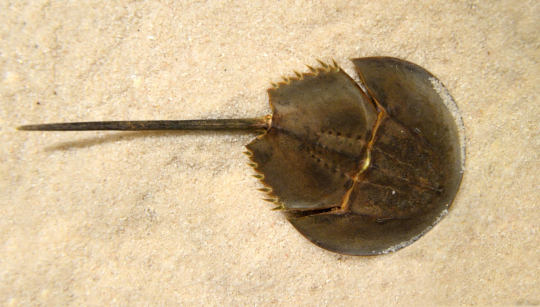
The mangrove horseshoe crab, also known as the round-tailed horseshoe crab, and scientific name Carcinoscorpius rotundicauda is one of the four living species of horseshoe crab remaining. The mangrove Horseshoe crab is closely related to the other 2 Asian horseshoe crabs: The Indo-Pacific Horseshoe crab (Tachypleus gigas), and the Chinese Horseshoe crab (Tachypleus tridentatus), but is the only member of the Carcinoscorpius genus. These three horseshoe crabs are separate from the American Atlantic Horseshoe crab, which separated between 130 to 400 million years ago! Now, Horseshoe crabs are horribly named, as they're not crabs at all. Instead, they belong to subphylum Chelicerata, which is in the Arthropod phylum, directly relating them to spiders and ticks.
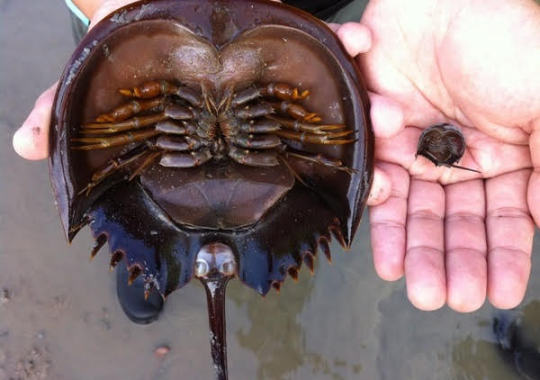
Like its name implies, the mangrove horseshoe crab lives in brackish waters in mangrove forests. They can be found across Southeastern Asia, down to the Indo-Pacific in Tropical and subtropical climates. This animal spends its time in shallow waters, preferring sandy areas. The mangrove Horseshoe is benthopelagic, meaning it lives its life on the seafloor, and although they rarely do so, horseshoe crabs can swim, albeit, upside down. I'd recommend looking up a video on them swimming, it's very cool to see!
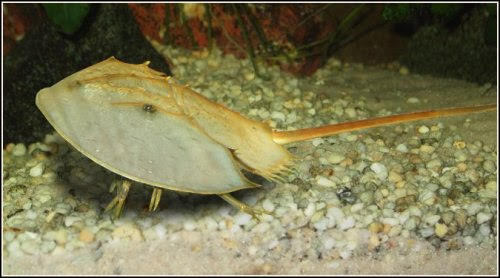
As benthic creatures, the mangrove horseshoe crabs diet is limited to what it can find on the seabed. Not only that, but, like all parts of the Chelicerata subphylum, it lacks jaws and teeth, and so it must feed in another method. Horseshoe crabs eat by grabbing prey with chelicerae, a pair of appendages in front of its legs, and passing prey to a food grove that runs from the furthest back legs, and up to the mouth. Well in the food grove, the bases of the legs are used to grind prey with teeth like structures, simultaneously passing further forward. Due to horseshoe crabs being so unchanged over the years, it is thought that this feeding method may have belonged to some of the earliest Arthropods. The diet of the mangrove horseshoe crab in particular is made up of insect larvae, small fish, marine worms, and mollusks. Although mangrove horseshoe crabs in particular have a strong preference for insect larvae above other prey.
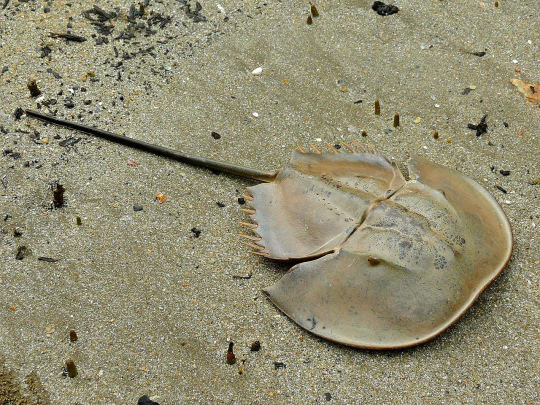
Anatomically horseshoe crabs get stranger yet. They contain 10 eyes: 2 compound eyes, which can be seen on the top of the head, used primarily for finding mates. Then, there is a pair of lateral eyes, on the underside, ventral eyes, used for finding prey, an endoparetial eye, and median eyes. Horseshoe crabs can see both visible and ultraviolet light, but are particularly sensitive to light amounts and changes in their surroundings. The tail, as opposed to some common thought, is not poisonous or a weapon, but rather it is used for flipping over easily, and some movement well swimming. In Mangrove horseshoe crabs the tail is far more rounded than its relatives.

Have a good day everyone!
#fish of the day#mangrove horseshoe crab#horseshoe crab#carcinoscorpius rotundicauda#fish#fishblr#crab#arthropod
22 notes
·
View notes
Note
Palmer Station AU Lilith always in short sleeves (Ava: you know you’re in Antarctica, right? Where the pencilguins are?) and everyone is a little concerned because she’s always underdressed and usually damp and never seems to notice it’s cold (Ava: it’s cold enough to freeze your tits off! Why is she in shorts? We know she’s tall, she doesn’t need to draw further attention to it.
Camila: She’s a horseshoe crab, that’s for sure.
Ava: … explain.
Beatrice: Survived 4 major extinction events but appears to be threatened. Apt.
Camila: Thanks. I would rather she just wore a jacket).
lilith who once spent hours every day swimming without a wetsuit in the atlantic, leaving her hoodie on a tree branch and her backpack with her gameboy and her snack bars wrapped in a tarp and rigged up on a length of repurposed bungee cord, because she read about big cats who pull their prey up into trees.
the first shock of water in the low celsius and how it made her feel so awake, so alive. and she’s addicted to that feeling, just a little, the body startled into bright awareness.
so at palmer while cam’s always going on about the insulative properties of wool, where even beatrice keeps quilts and her solar space heater and a good sturdy jacket up in her observatory, lilith is walking around in tank tops, hair wet on her shoulders, hands always chilly to touch so when cam tries to show her scales on the keyboard she ends up turned sideways on the upside-down bucket they use as a piano bench, cradling lilith’s hands in her hands and warming them with her breath.
faint notes of matcha and anise from her mouth and lilith wondering how she’d taste.
cam murmuring, ‘you’re freezing. doesn’t it hurt?’ and lilith shrugs.
she can’t look at cam while she speaks. afraid she’ll lose the words, or decide to do something else with her mouth. she’s not good at talking, learned ASL and ESL to let her speak with other divers underwater. in water, sound behaves differently.
‘most fish are cold-blooded. it allows them to live in broader temperature ranges. a useful adaptation for an environment that is traversable vertically and horizontally.’
cam humming, playing with her fingers now, finding the calluses, skin-texture shaped by years of performing certain, repetitive actions. lilith has a few from holding cutlery too tightly.
dark curls shifting as cam looks up. ‘you study that, right? adaptations.’
sign language underwater. backpacks in trees and a body growing fond of the cold. old manor houses with poor central heating and lilith curled up next to the fire downstairs while her mother is at dinner parties. waking up with a blanket over her, and for years convincing herself it was her father’s ghost. because she could not imagine her mother, tipsy in high-heels, smelling of cigarillo smoke, having the delicacy to cover up the small shape half-lit by the dying fire.
maybe she just didn't want to see it.
‘yes, among other things.’ lilith watches her fingers fold, unfold, as cam manipulates them. ‘some fish, like bluefin tuna, are warm-blooded. this allows them to swim on average around 1.6 times faster than other fish. an advantage, but it also makes them more vulnerable to the effects of climate change. temperature and habitat disruption.’
‘is that why you won’t wear a coat? are you afraid of adapting?’
cam’s eyes are shrewd, searching.
biting her lip, hands almost pulling out from the campfire of cam’s hands. ‘i- no i just… want to belong here. don’t like hiding from it, don’t like all the tight layers and the itchy heat. i like the water to decide how i feel.’
(so you don’t have to.)
camila is not so unkind as to say it, but her dark eyes are bathypelagic. deep, but home to things lilith loves.
‘i like to be free,’ she finishes. a bit lamely, in her mind, but cam only looks intrigued.
she curls lilith’s hands into two tight fists and returns them to her. they end up on her lap, peeling back apart like a pair of dead crabs.
‘but… sometimes adaptations are good, right?’
lilith shrugs, ‘yes, and sometimes they’re a cancer. evolution is a one-sided story. it’s not an artist’s sketch, or god. it’s chaos - just an account of a bunch of creatures who got lucky.’
she expects this to provoke a flinch, a wash of cold water, but camila only giggles, taps a few keys. the start of a tune lilith half-recognizes. familiar in the way a mouth can be even after a long time, with eyes closed.
‘you’re right.’ cam's eyes glitter. things live in the deep ocean where it’s dark. lilith knows this, but cam’s eyes make her believe it. ‘people can get used to the cold.’
her cold hands in cam’s warmth
‘but it’s okay to be warm sometimes?’ cam's voice hitches up at the end, so maybe it's a question. maybe she should answer.
lilith wonders if cam knows how to sign. she should teach her. it’s so useful for diving, for when a girl takes all the air out of the room.
cam turns bright, then. pelagic. ‘also, you don’t want to end up getting sick around me. i’ll make you so much tea you’ll start to hate me.’
impossible, lilith thinks. but all she does is nod, and look away.
#palmer station au#and then the obligatory sickfic ghdkslds#camilith#anon#i am giving you a good grade in sending me asks#casper writes
58 notes
·
View notes
Text

Atlantic horseshoe crab encrusted with acorn barnacles. The barnacles will be shed next time the horseshoe crab molts
By: Fritz Goro
From: Invertebrates of North America
1972
#captivity#horseshoe crab#arachnid#arthropod#invertebrate#barnacle#crustacean#1972#1970s#Fritz Goro#Invertebrates of North America
305 notes
·
View notes
Text
Cephalopod, Crustacean, and Shellfish Headcanon Questions
Feel free to change pronouns as necessary, and remember to specify muse for multimuse blogs.
CW: Food
—
Peacock Mantis Shrimp: How is your muse's eyesight? Good? Bad? Fair?
Common Limpet: Does your muse have an unpopular opinion on something?
Antarctic Krill: How available is your muse for helping others?
Colossal Squid: What is your muse clinging to?
Broadclub Cuttlefish: Does your muse hide parts of themself from others?
Colorful Hermit Crab: How sought after is your muse? Can people not get enough of them?
American Oyster: Is your muse easily manipulated?
White Shrimp: What does a typical night in look like for your muse?
Acorn Barnacle: Does your muse give up easily or are they ride or die?
Tiger Prawn: What does your muse do to show off?
Kisslip Cuttlefish: Is your muse stylish?
Dumbo Octopus: What is a subject your muse pretends to know a great deal about but doesn't actually know much about?
Hawaiian Bobtail Squid: What is a subject your muse just cannot understand?
Queen Conch: Is your muse prone to stealing?
Flamingo Tongue: What does your muse think about animal prints?
Striped Pyjama Squid: What does your muse wear to bed most often?
American Horseshoe Crab: How resilient is your muse?
Shortfin Squid: Is your muse considered tall or short for their age?
Blue-Ringed Octopus: What is your muse's main toxic trait?
Flamboyant Cuttlefish: Does your muse like to dress up?
Atlantic Blue Crab: Is your muse grumpy in the mornings or are they a morning person? Do they run on coffee?
King Crab: What is your muse known for?
Geoduck: Is your muse a foodie?
Chambered Nautilus: What is something your muse collects?
Giant Pacific Octopus: What is one thing your muse will run from every time?
Vampire Squid: What are your muse's defense mechanisms?
Decorator Crab: If your muse is hurting, how do they handle it? This can be physical, emotional, or mental pain.
Humboldt Squid: What makes your muse a smooth operator?
Caribbean Spiny Lobster: What is a valuable piece of knowledge to get close to your muse?
Caribbean Reef Octopus: What is your muse's least favorite color?
Giant Triton: Is your muse a good listener?
18 notes
·
View notes
Photo

@ventureexpedtion-1933 submitted: Underside of a female Atlantic horseshoe crab (limulus Polyphemus)
Ohohoho what a beautiful Creature
313 notes
·
View notes
Photo
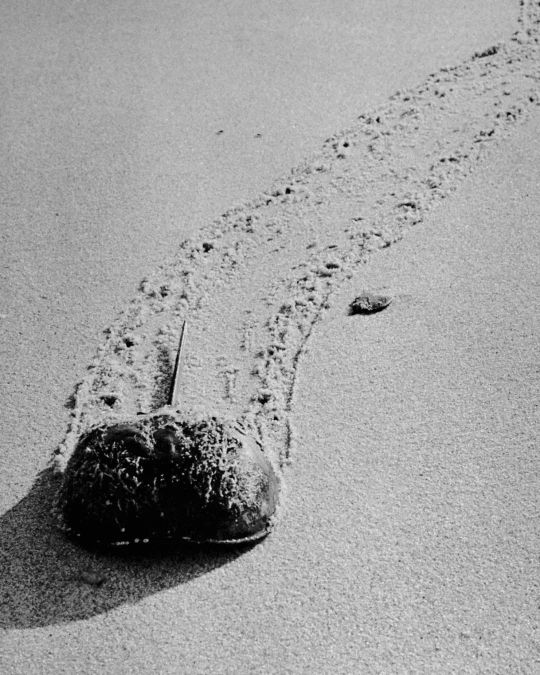
A horseshoe crab bull- dozes its way across the sand. Found on the Atlantic coast of North America and the Pacific coast of Asia, it is the only living representative of a class dating back to the early Paleozoic. Photo by Gordon S. Smith. From "The sea" by Robert Cunningham Miller, 1966. https://www.instagram.com/p/ClRiyXltSTJ/?igshid=NGJjMDIxMWI=
115 notes
·
View notes
Note
trick or treat !! I dont talk much here, but I think your v cool & funky and I always love seeing your funky things :DD
Thank you friend! I appreciate your kind words. :)
Tell you what. On May 8th, you sent me an ask about horseshoe crabs, and I wanted to make a little comic about them like I've done with Magnapinnas and some other sea friends. I did the research, I have the sources down, I even got to finishing all the sketches and some lineart! But, for some reason I lost motivation midway through, I just wasn't very happy with how my art looked in the comic so production slowly fizzled out. Here's an unfinished page with a distribution map for all the species of horseshoe crab! Done by hand by yours truly.
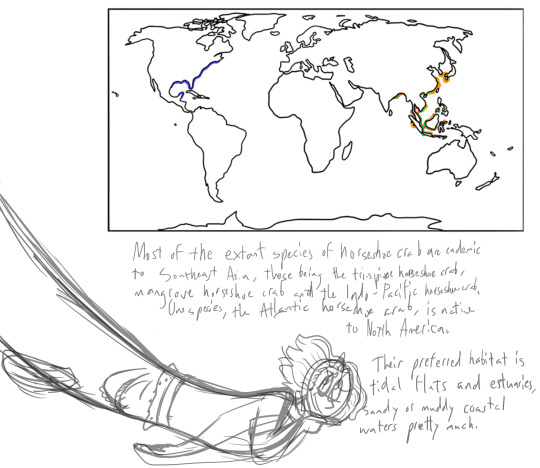
Blue is Atlantic horseshoe crab Limulus polyphemus, orange/yellow is trispine horseshoe crab Tachypleus tridentatus, green is mangrove horseshoe crab Carcinoscorpius rotundicauda, and red is coastal horseshoe crab (called Indo-Pacific horseshoe crab here) Tachypleus gigas. Hope this suffices as a treat!
12 notes
·
View notes